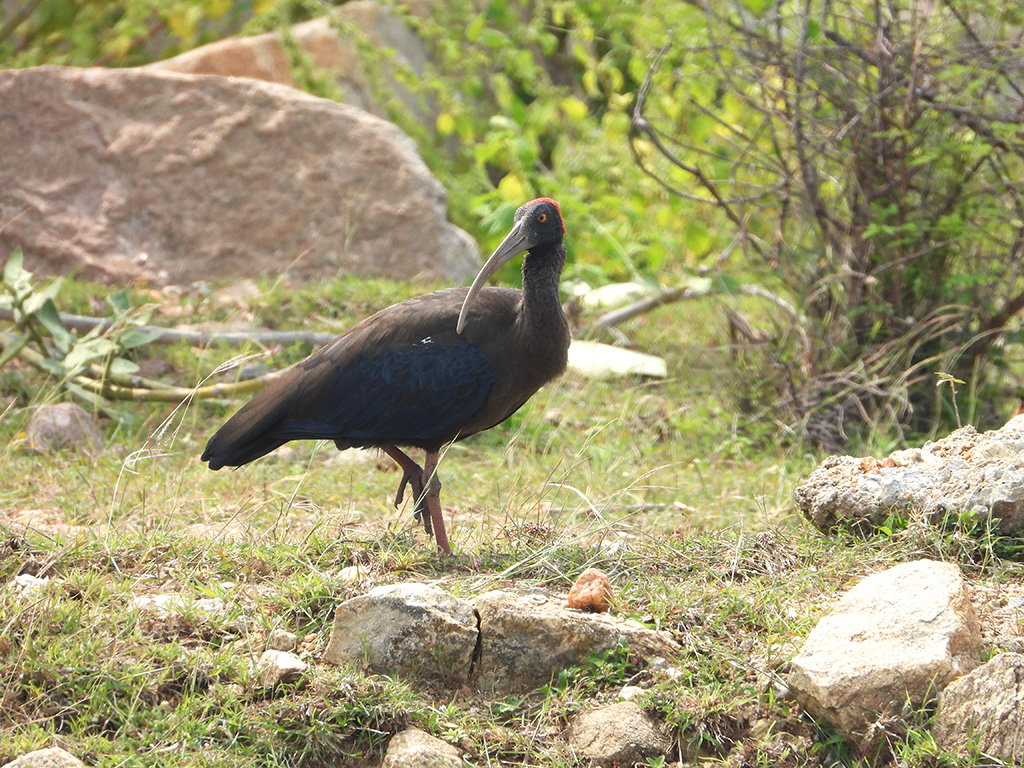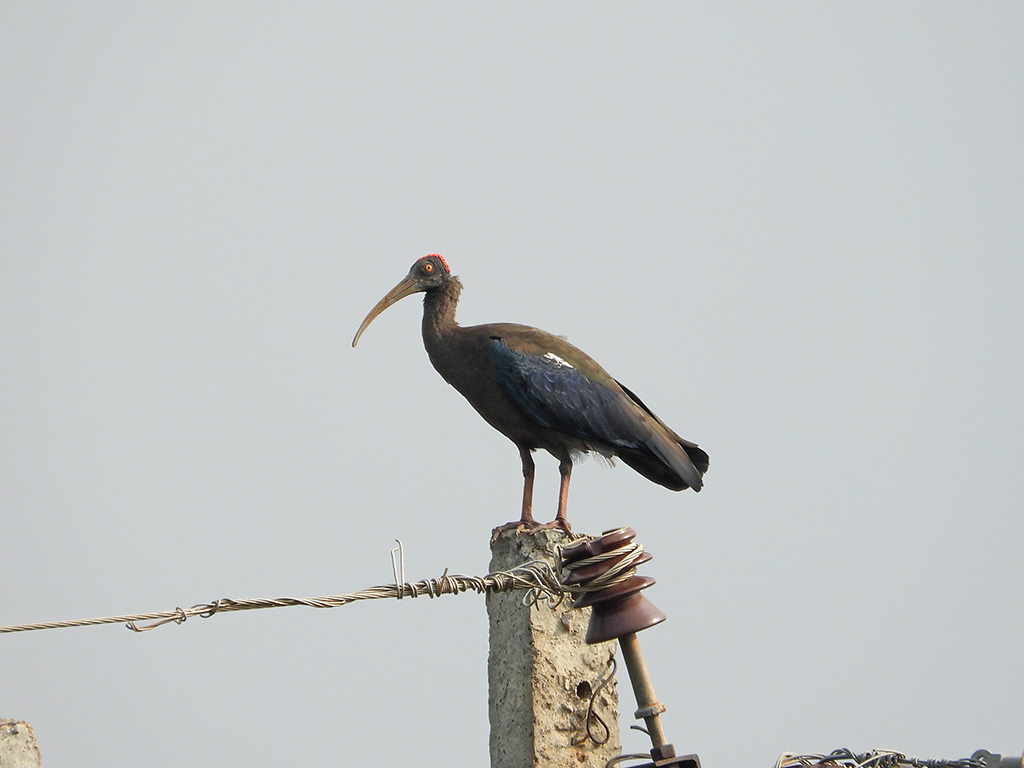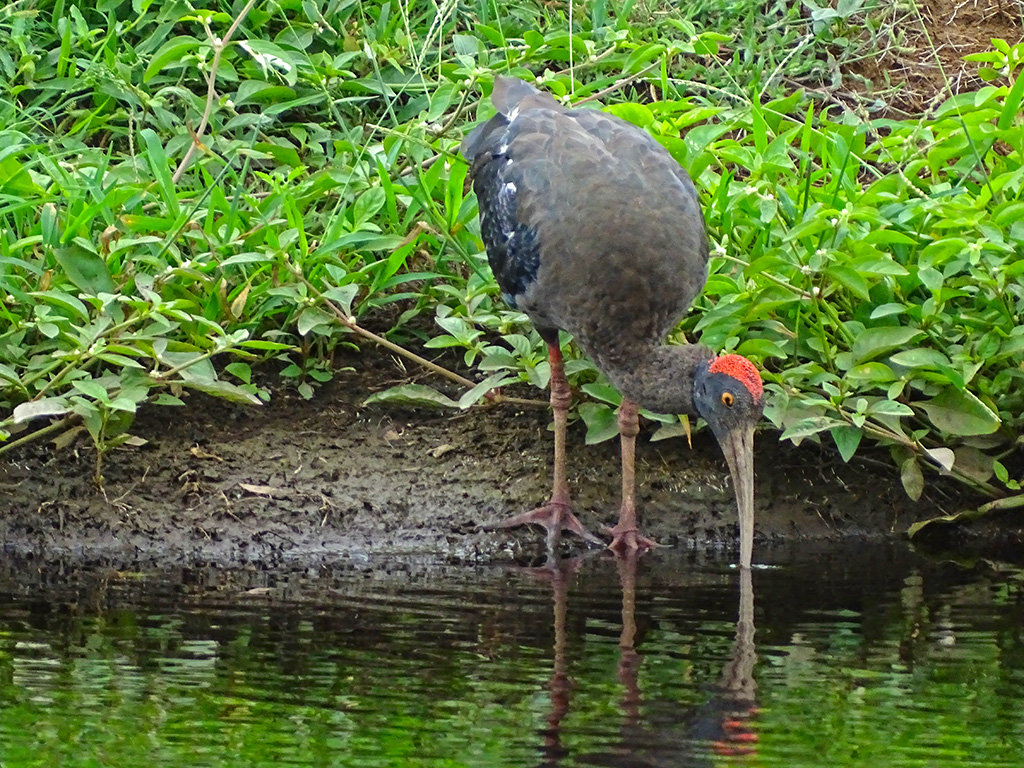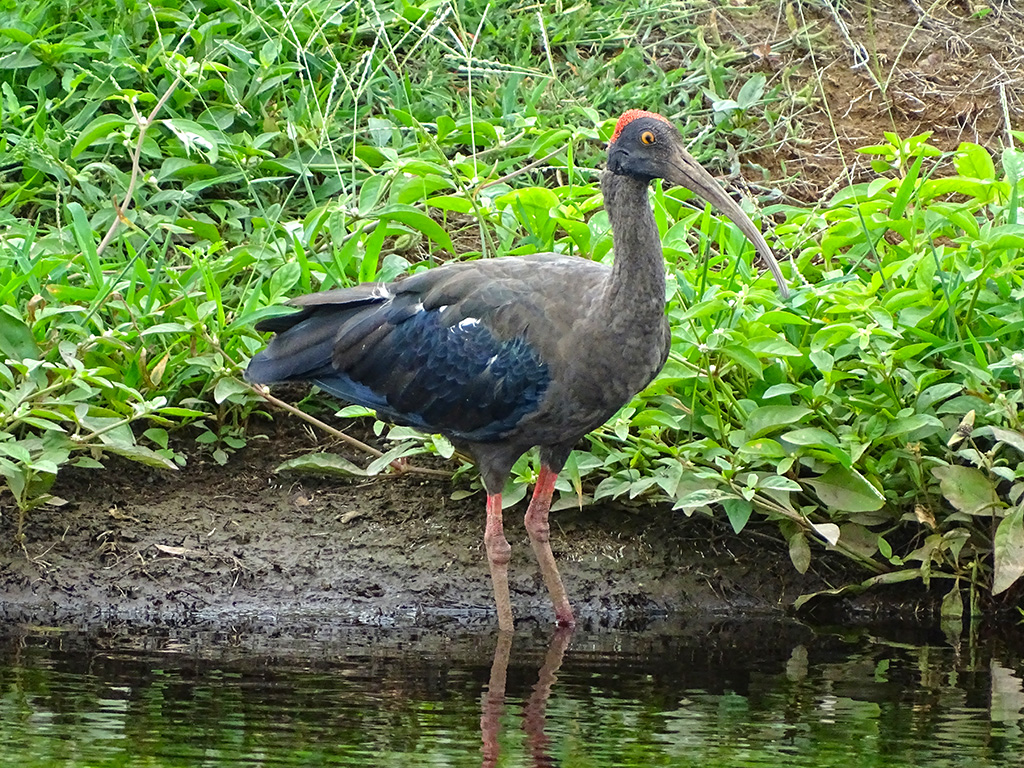| IUCN (International Union for Conservation of Nature): | Least Concern
|
|---|
| Approximate size(adult): | About 75–85 cm in length; wingspan 120–135 cm; weight around 1.5–2 kg. A large, dark ibis with glossy black plumage, a bare red patch (nape) behind the head, and a long decurved bill. Shoulders often show a bluish-green sheen.
|
|---|
| Resident/ Migrate from: | Resident species found widely across India, Nepal, and parts of Pakistan. Non-migratory.
|
|---|
| Migrate to: | Non-migratory, though may make local movements related to rainfall, breeding, or food availability.
|
|---|
| Breeding season: | March to October, peaking during the monsoon months. Courtship includes displays with wing-spreading and calling.
|
|---|
| Breed in: | Nests built in tall trees, often near wetlands, fields, or villages. The stick nest is lined with grass and leaves. Lays 2–4 eggs, incubated by both parents.
|
|---|
| Habitat: | Found in wetlands, riverbanks, marshes, agricultural lands, and dry open plains. Unlike other ibises, it also frequents dry fields and grasslands far from water. Often seen in pairs or small groups.
|
|---|
| Diet: | Omnivorous — feeds on insects, frogs, small reptiles, crabs, and grains. Forages mainly on the ground by probing soil and shallow water with its long bill.
|
|---|



















